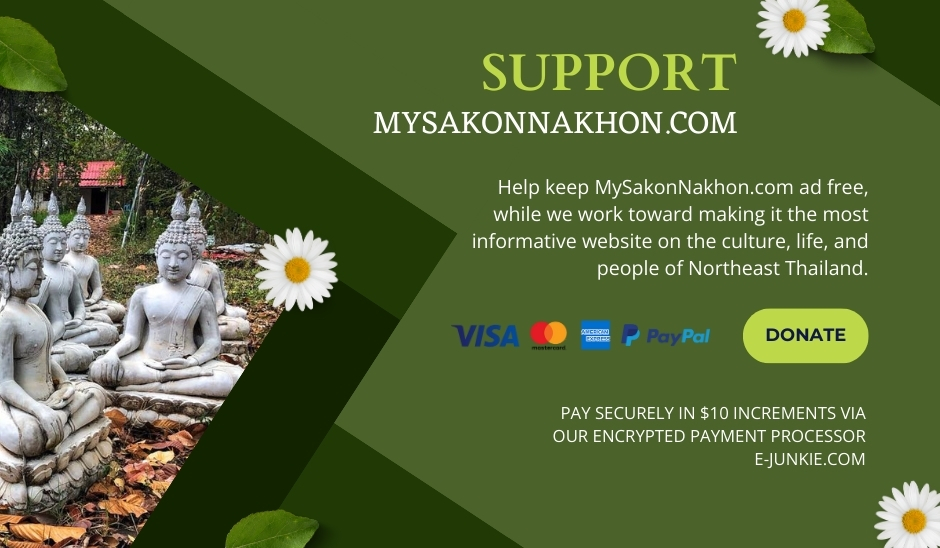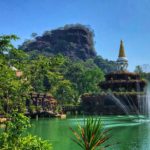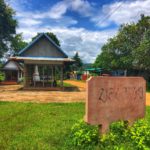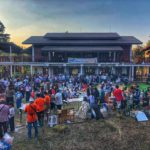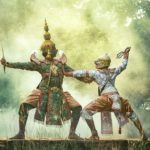
Preta: Hungry Ghost Spirits in Thailand
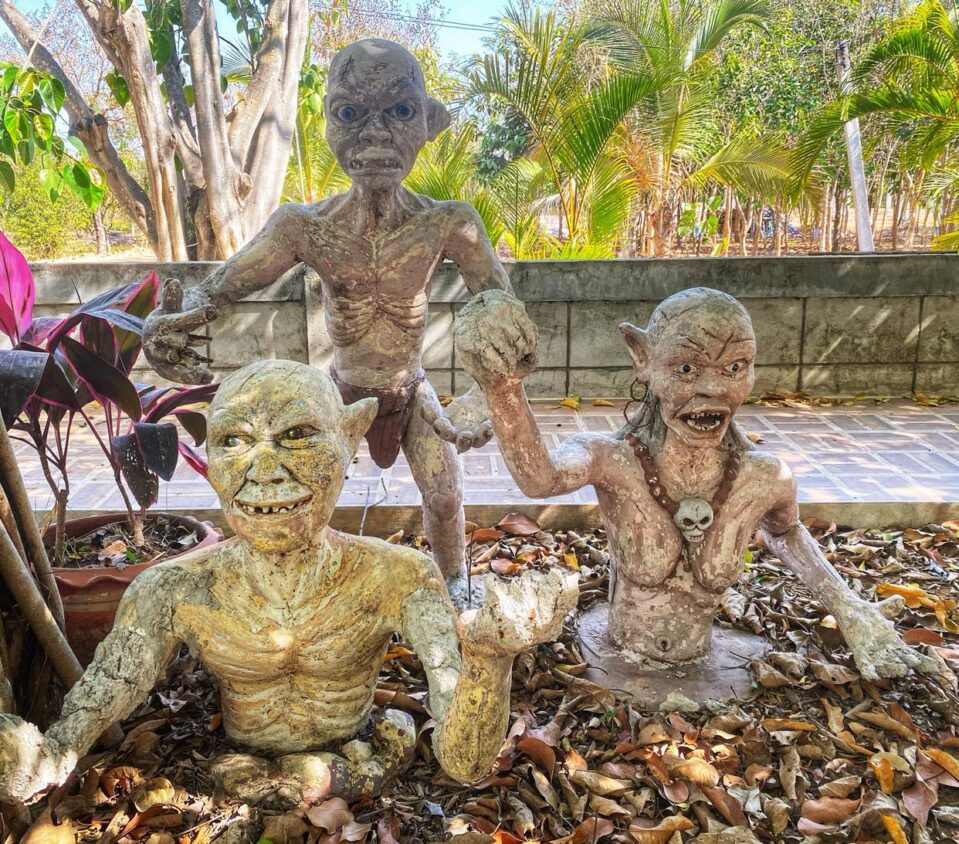
Thai culture is filled with supernatural spirits or ghosts, such as Nang Tani (the spirit who haunts wild banana trees) and the cannibalistic Phi Pop who will eat your internal organs with glee. These spirits are part of Thai folklore rather than Buddhist traditions, thus you’ll rarely, if ever, see one depicted inside a Thai temple.
However, there is one ghost spirit connected with Buddhism that occasionally will appear at one of Thailand’s temples, and that is Preta (เปรต), also known as “the hungry ghost”.
In Buddhist cosmology, Pretas are depicted as beings who are afflicted with insatiable hunger and thirst due to their past negative actions and karma. They are often (especially in Thai folklore) depicted with distended bellies and tiny mouths, making it impossible for them to satisfy their desires. They also may be depicted with elongated legs, arms, and hands.
But not all Pretas have these distinct physical characteristics. Many different depictions exist, not just in Thailand but throughout Southeast Asia. The common element is that they illustrate what happens to us when we stray far away from the path of the Dharma (i.e. Buddha’s teachings).
While Pretas are believed to wander in a state of perpetual suffering, unable to find relief, you’ll sometimes find them sunken into the ground at a Thai temple, signifying how they are enslaved by their base desires and live on the lowest realm of the Buddhist karmic world (known as the Preta Realm).
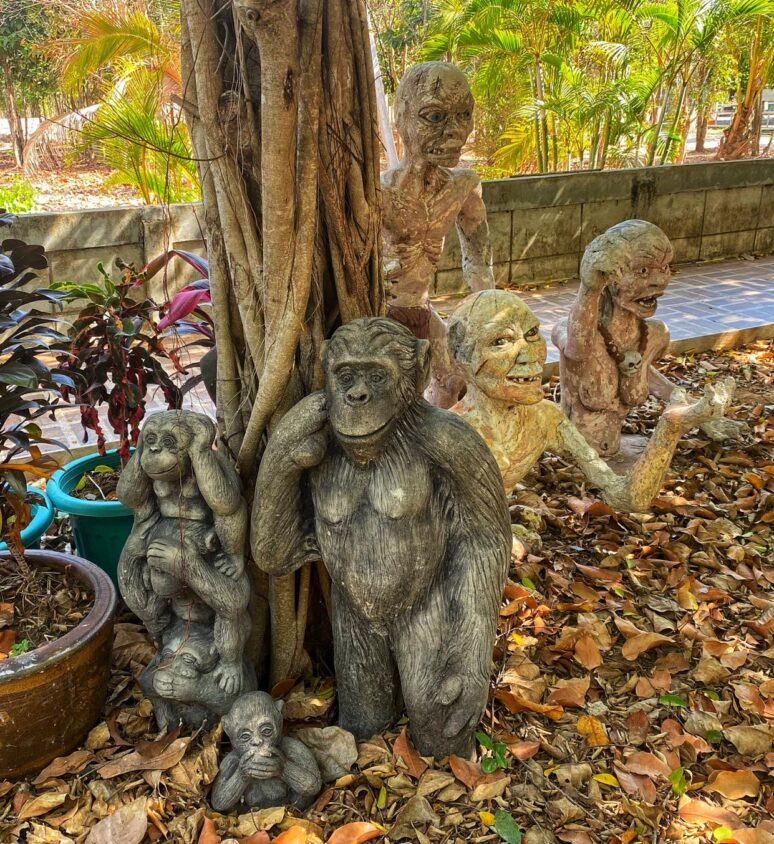
Sunken into the earth is how we see Pretas depicted at the Sakon Nakhon temple Wat Phu Phan Wihan Tham (สำนักสงฆ์ภูพานวิหารธรรม). This “samnak song” or Buddhist monastery in the Phu Phan Mountains has created a striking tableau of Preta and monkey statues.
The Three Wise Monkeys in Buddhist Context
Placed beside one side of a tree are small statues of the famous “Three Wise Monkeys” with their hands placed over their ears, eyes, and mouth (respectively). In the Buddhist context, the principle of the Three Wise Monkeys can be interpreted as:
1. See No Evil: This aspect encourages us to refrain from engaging in or dwelling upon harmful or unwholesome sights. By practicing restraint in what one chooses to see, we can cultivate a mind free from unwholesome perceptions.
2. Hear No Evil: Similarly, this aspect emphasizes the importance of guarding one’s ears and mind against harmful or unwholesome speech and sounds. By avoiding gossip, slander, and divisive speech, we can create an environment conducive to peace and harmony.
3. Speak No Evil: This aspect highlights the significance of practicing right speech, which involves abstaining from lying, harsh speech, divisive speech, and idle chatter. By cultivating mindfulness and compassion in speech, we can contribute to the welfare and happiness of others.
The Symbolic Meaning of Preta
On the other side of the tree (opposite the Three Wise Monkeys), the Thai monks have placed three male Preta statues — two immersed in the earth and one standing. One Preta looks like a hermaphrodite, while the other looks well-endowed but is covered by a loin cloth.
Preta statues often are seen with a long phallus, representing the spirit’s enslavement to carnal desires. The depiction of the hermaphroditic male (with breasts) also represents this enslavement.
One of the Pretas sunk into the earth is seen smiling, which represents not happiness but the fleeting pleasure that Preta spirits confuse with happiness, and which inevitably leads again to frustration, anger, and disappointment — as seen in the countenance of other Pretas.
Overall, Preta figures in Thailand serve as a reminder of the consequences of negative actions such as greed, lust, stinginess, and deceit, and the importance of cultivating positive virtues like generosity, kindness, compassion, and honesty to avoid suffering in this life and the next.
Some Thai Buddhists who believe that one of their dead relatives has become a Preta in the next life will make merit at a Thai temple on their behalf, including offerings of incense, flowers, and special prayers to help them rise above the “Preta Realm” in their next life.
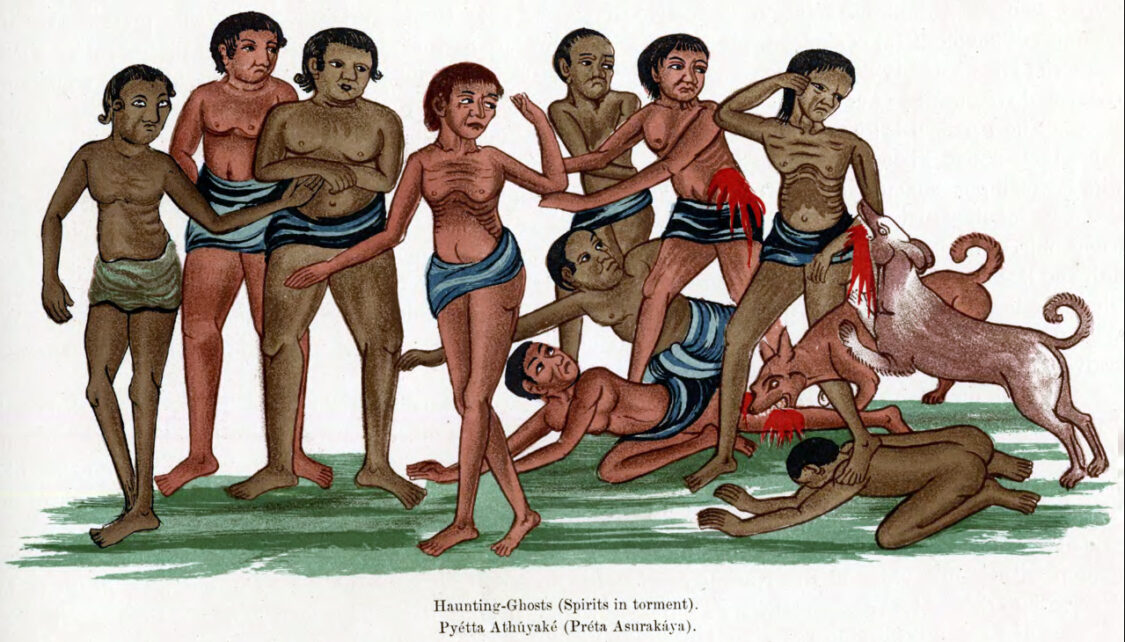
The Hungry Ghost Festival in Thailand
The Hungry Ghost Festival in Thailand is known as “Por Tor” (พ้อต่อ), which means “continuing on”. This festival primarily is celebrated by the Thai-Chinese communities in Phuket, Bangkok, and Chiang Mai.
The Hungry Ghost Festival is celebrated around the Chinese New Year, on the 15th day of the seventh lunar month. It’s based on the belief that during this time, the gates of the underworld are opened, allowing spirits and ghosts to roam freely among the living.
These spirits are not necessarily “Pretas” as described in Buddhist tradition. Instead, these spirits are believed to be the souls of deceased ancestors or other wandering spirits who may not have found peace in the afterlife.
During the festival, Thai-Chinese communities participate in various rituals and ceremonies to honor and appease these restless spirits. One of the main rituals involves offering food, burning incense, and making offerings of money or other symbolic items at temples, shrines, and ancestral altars. These offerings are made to provide comfort to the spirits and ensure their well-being in the afterlife.
The Hungry Ghost Festival in Thailand also serves as a reminder of the importance of honoring the past and maintaining connections with departed loved ones.
- The Hidden Dharma of Thai Language & Culture - May 11, 2024
- The Royal Ploughing Ceremony in Thailand – A History - May 8, 2024
- Dying Well the Buddhist Way in Thailand - May 7, 2024
